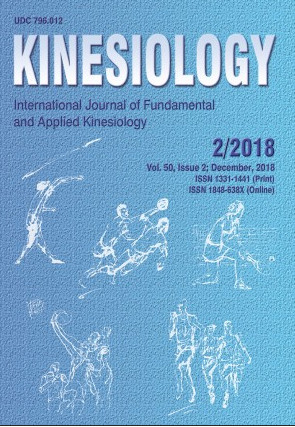The purpose of this study was to ascertain the pacing strategies employed in 10 km open water swimming events, and to define which split time was most determinant for the final performance as a function of sex and classification in International Championships of the highest level. Six international competitions over the last five years were analysed retrospectively: Olympic Games, World Championships, and European Championships. The data corresponded to a total of 437 swimmers̕ competition histories (257 men, 180 women). A two-way analysis of variance (sex [2 levels: men, women], classification [3 levels: 1st to 3rd, 4th to 8th, 9th and below]) was performed for each split (0-2.5 km, 2.6-5.0 km, 5.1-7.5 km, and 7.6 to 10 km) and half (0-5 km, 5.1-10 km). The Bonferroni post-hoc test was used to compare means, and Pearson᾿s simple correlation coefficient to determine correlations between the split times and the final performance (total time). In general, the medal winners and the seconde tier classified swimmers, both men and women, employed a negative pacing strategy (the first half of the race was swum slower than the second). Women, however, in proportional terms swam a faster first partial (0 to 2.5 km) than men. These results could help coaches convince their swimmers that the first split of the event should be swum as slowly as possible, while still ensuring that they are in the leading group.
Sažetak

 Kinesiology : 50,2(2018) / editor-in-chief Dragan Milanović.
Kinesiology : 50,2(2018) / editor-in-chief Dragan Milanović.